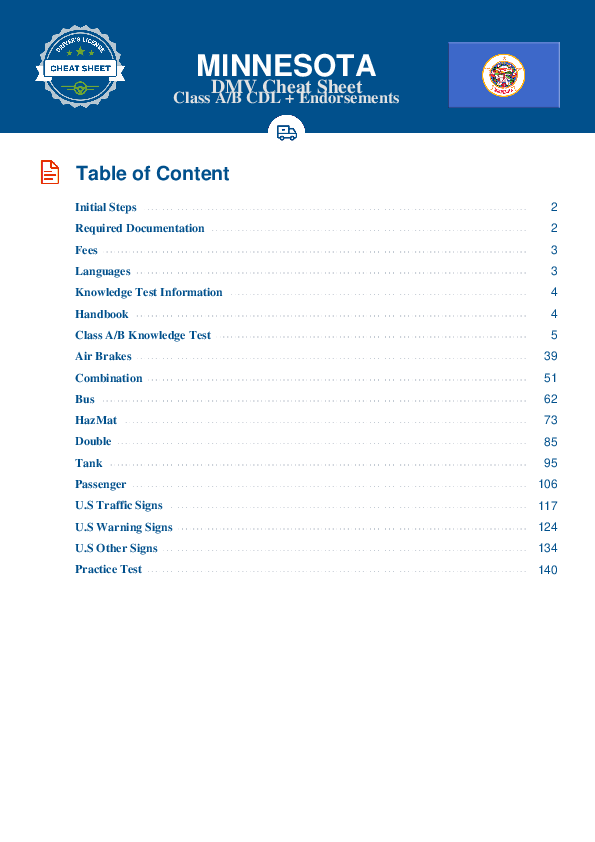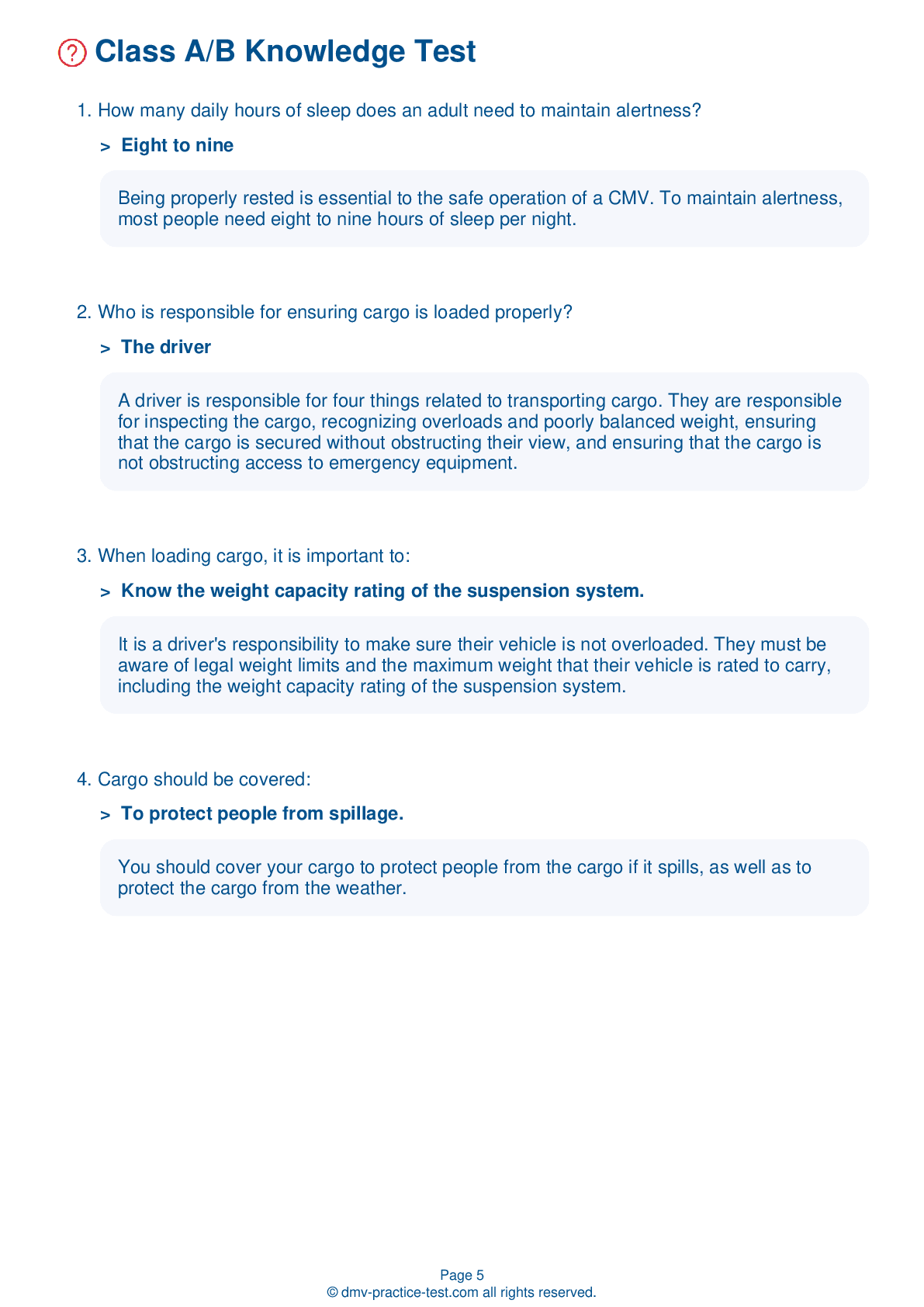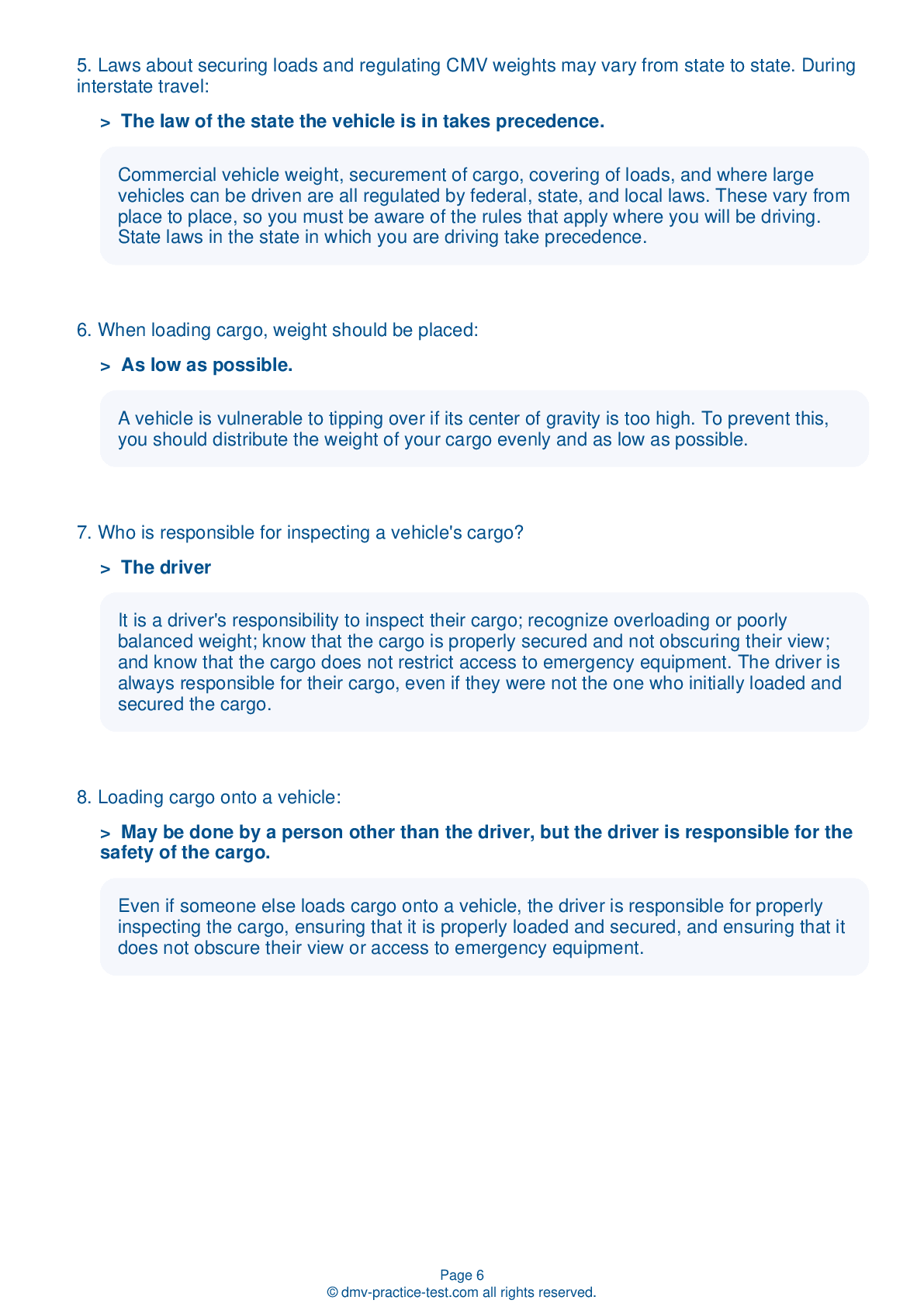Air Brakes Endorsement Test | Minnesota 2025 #1 Page 4 of 4
Train for FREE online with our Minnesota CDL air brake test. The official exam test consists of several obligatory parts, with all of them checking your knowledge of different blocks of road rules. If you need to obtain a MN Class A/Class B driver license in 2025, practice as much as possible. Free sample tests published on our website will help you check and improve your knowledge and boost your grades. Please bear in mind that the requirements for CDL may vary from state to state.
19 . The ____ between an air compressor and reservoir tank prevents air from escaping if the air compressor has a leak.
A one-way check valve is required to be between an air compressor and the first main reservoir. This valve prevents air from escaping the system if the air compressor develops a leak.
20 . In an empty combination vehicle, the stiff suspension springs and strong brakes will have:
An empty combination vehicle will come to a complete stop more slowly than a fully-loaded vehicle. With less weight in a trailer, the stiff suspension springs and strong brakes will have lower traction than they would if the vehicle carried more weight.
21 . Service brakes should:
Before driving, you should always verify that your service brakes are in good working order. Testing the brakes before a trip allows you to locate any problems before you need to brake while on the road.
22 . To ensure normal stopping power, drivers of vehicles equipped with a front brake limiting valve should:
Some pre-1975 vehicles have a front brake limiting valve, which has "normal" and "slippery" settings. The idea behind these valves was to limit the air pressure available to the front brakes when driving on slippery surfaces, and thereby reduce the danger of a front-wheel skid. Studies have found that this is not actually a concern, so if your vehicle has a front brake limiting valve, leave it in the "normal" position.
23 . ABS usually shortens a vehicle's stopping distance.
While an Anti-Lock Braking System (ABS) helps give a driver more control while braking, it does not necessarily shorten the vehicle's stopping distance.
24 . Operating combination vehicles usually requires ____ operating single vehicles.
Combination vehicles are usually heavier and longer than single combination vehicles. Operating a combination vehicle requires a higher level of driving skill than operating a single commercial vehicle.
25 . A driver can rely on front wheel braking to work:
Front wheel braking is effective under all road conditions. It is unlikely that you will experience a front wheel skid, even on ice.
See the exact questions that will be on the 2025 Minnesota DMV exam.
99.2% of people who use the cheat sheet pass the FIRST TIME
Lillian MCcranie explains how our CDL study guide was helpful in passing the exam and recommends it to everyone.
Cameron tells us how he purchased the CDL exam, and found it to be a useful tool which helped him pass the exam and find a job.



